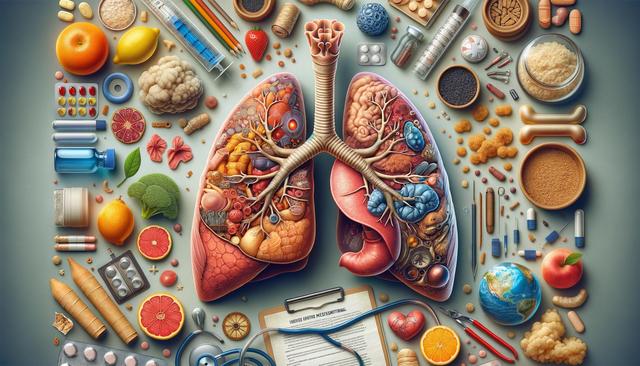Understanding COPD and Its Exacerbations
Chronic Obstructive Pulmonary Disease (COPD) is a progressive lung condition that can significantly impact a person’s ability to breathe. Exacerbations, or flare-ups, are periods when symptoms suddenly worsen beyond the normal day-to-day variations. While mild exacerbations may be managed at home, severe episodes require immediate medical attention. Recognizing the signs early can help individuals seek timely intervention and avoid more serious health outcomes. COPD exacerbations can be triggered by infections, environmental pollutants, or even sudden weather changes.
During a severe exacerbation, the airways become increasingly inflamed and narrowed, making it difficult to move air in and out of the lungs. This leads to a sharp decline in oxygen levels and a build-up of carbon dioxide, which can be life-threatening if not addressed promptly. Understanding the underlying mechanisms of these episodes and their triggers is the first step toward managing them effectively and minimizing their impact.
Shortness of Breath That Rapidly Worsens
One of the most noticeable indicators of a severe COPD exacerbation is a sudden and significant increase in shortness of breath. This symptom may appear even when the individual is at rest or performing minimal physical activity. Unlike the chronic breathlessness experienced with stable COPD, this intensified version comes on quickly and can feel overwhelming.
People may describe this feeling as:
- Not being able to catch their breath
- A feeling of suffocation or chest tightness
- Increased anxiety or panic due to breathing difficulty
If shortness of breath escalates to the point where speaking becomes difficult or impossible, or if it is accompanied by blue lips or fingertips (cyanosis), it is crucial to seek emergency medical care immediately. These signs may indicate that the body is not getting enough oxygen, posing a serious risk to overall health.
Increased Coughing and Changes in Mucus
Coughing is a common symptom of COPD, but during a severe exacerbation, the frequency and intensity of coughing can rise dramatically. This may be accompanied by noticeable changes in mucus production. Monitoring these changes can offer important clues about the severity of the episode and whether medical attention is needed.
Key changes to watch for include:
- Mucus becomes thick, sticky, or changes in color (e.g., yellow, green, or bloody)
- Increased volume of mucus being produced
- A new or worsening bad taste in the mouth due to infected mucus
These symptoms often point to an underlying infection, such as bronchitis or pneumonia, which is a common trigger for exacerbations. Proper diagnosis and treatment, including the use of antibiotics or steroids, may be necessary to prevent further complications.
Fatigue and Difficulty Performing Daily Activities
As the body struggles to get enough oxygen, individuals experiencing a severe COPD exacerbation may feel extreme fatigue and weakness. This fatigue goes beyond normal tiredness and can interfere with the ability to carry out basic tasks such as walking, dressing, or even eating. The energy usually reserved for daily functioning is diverted toward the effort of simply breathing.
Additional signs of severe fatigue include:
- Needing to rest frequently during routine activities
- Feeling dizzy or lightheaded
- Experiencing confusion or difficulty concentrating
These symptoms may indicate that the brain and other vital organs are not receiving adequate oxygen. When this happens, it’s essential to act quickly to ensure oxygen levels are restored before serious complications arise.
Need for Rescue Medications More Frequently
People with COPD often rely on rescue inhalers to manage sudden symptoms. However, during a severe exacerbation, these medications may become less effective, or their use may increase significantly. This change in medication response is a critical indicator that the condition is worsening and may not be manageable with home treatment alone.
Warning signs in this area include:
- Using a rescue inhaler more than every few hours
- Little to no relief after using medications
- Needing to use multiple types of medications to feel any improvement
If the usual medications fail to provide the expected relief, this could mean that the lungs are too inflamed or obstructed to respond adequately. In such cases, seeking prompt medical care is essential to avoid further deterioration and the potential need for hospitalization.
Conclusion: When to Seek Help
Being aware of the signs of a severe COPD exacerbation can make a significant difference in managing the condition and maintaining quality of life. If you or someone you care for experiences rapidly worsening shortness of breath, changes in mucus, extreme fatigue, or an increased need for medications, it’s important to consult a healthcare provider immediately. Early intervention can reduce the severity of the episode and prevent long-term damage or hospitalization. By staying alert to these signs and maintaining a strong partnership with medical professionals, individuals with COPD can better navigate flare-ups and lead more stable lives.


